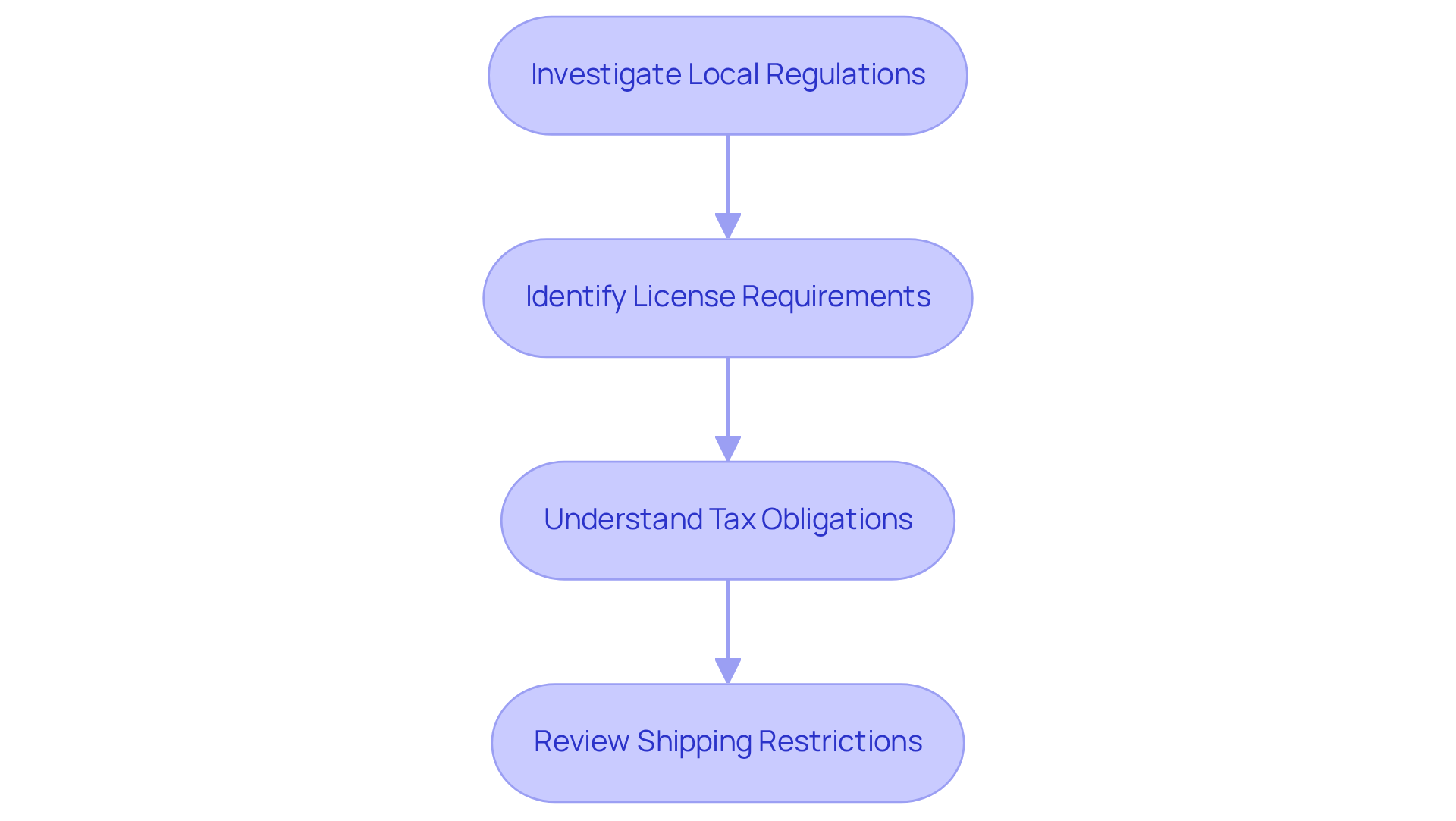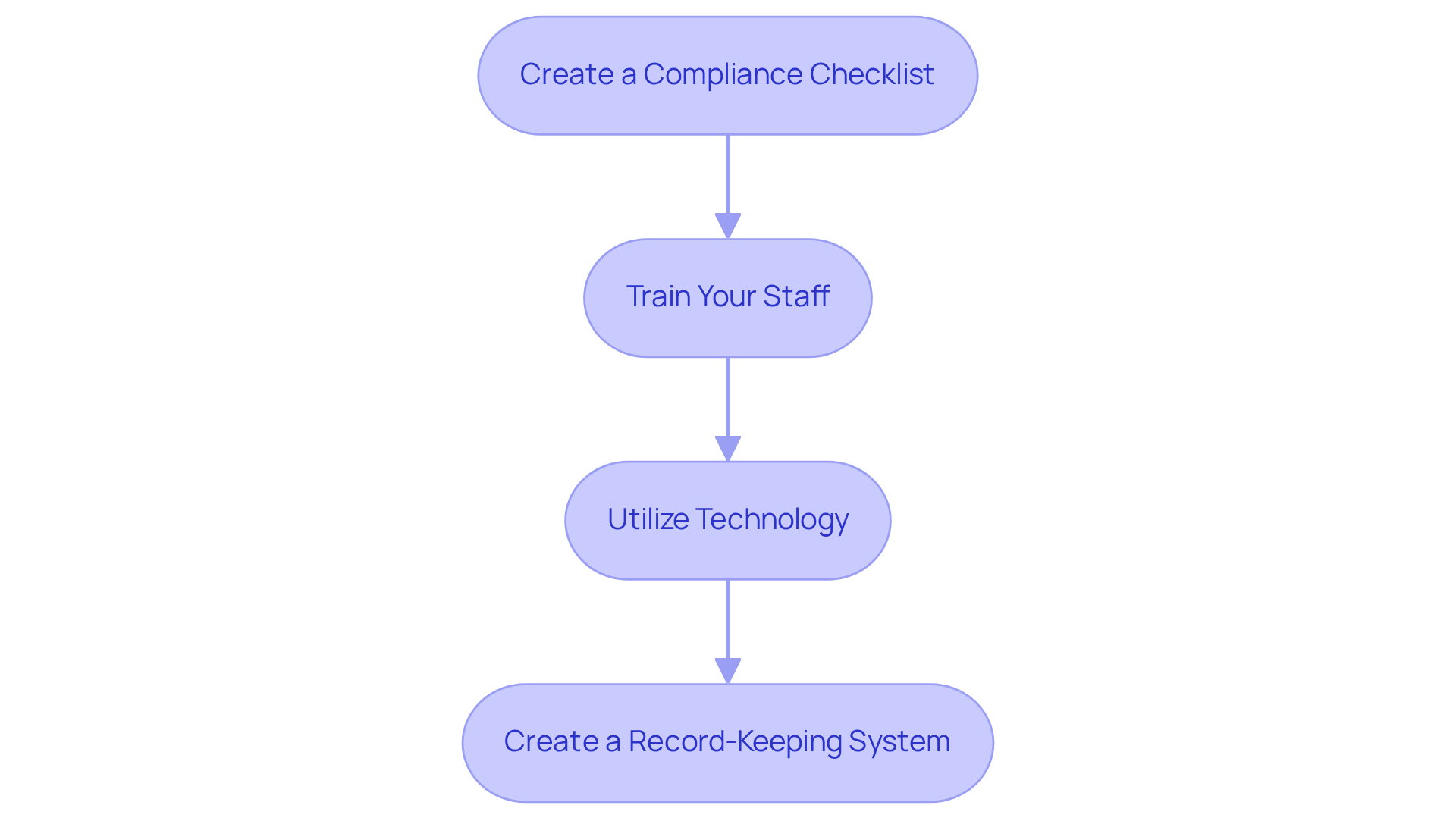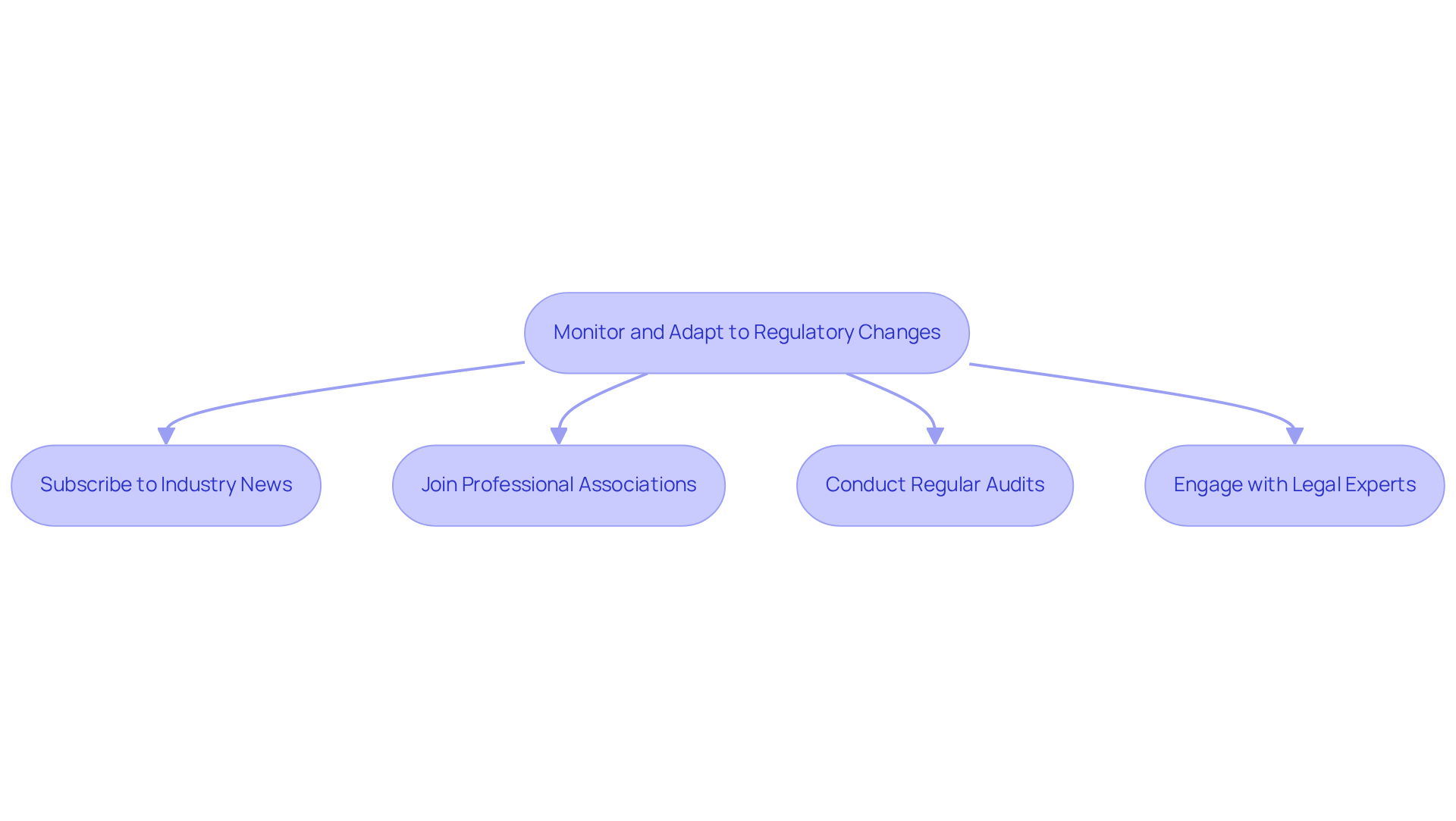Overview
To master direct wine shipping compliance, it is essential to grasp local regulations, implement state-specific procedures, and continuously monitor for regulatory changes. This understanding is not merely advantageous; it is vital for success in the wine industry.
- Investigating local laws is the first step in this journey.
- Creating compliance checklists will serve as a practical guide, ensuring adherence to the complex and varying requirements across different regions.
- Furthermore, engaging with industry news is crucial to staying informed about the latest regulatory developments.
By following these essential steps, decision-makers can navigate the intricate landscape of wine shipping compliance with confidence and authority.
Introduction
Navigating the intricate world of direct wine shipping compliance resembles traversing a legal labyrinth, where each twist and turn presents unique challenges. For wineries seeking to expand their reach, grasping the complex regulations governing wine delivery is not merely beneficial—it's essential.
What strategies can wineries implement to ensure compliance amidst the ever-evolving landscape of laws and regulations? How can they streamline their processes to sidestep costly pitfalls?
This article explores three straightforward steps that will empower wineries to master compliance and thrive in the competitive arena of direct wine shipping.
Understand Direct Wine Shipping Regulations
To master direct wine shipping compliance effectively, it is essential to familiarize yourself with the myriad regulations governing wine deliveries. Each region has its own set of rules regarding the sale and distribution of alcohol, encompassing licensing requirements, transport limits, and tax obligations. Follow these crucial steps:
- Investigate Local Regulations: Leverage resources such as the National Association of Wine Retailers or regional alcohol control boards to gather comprehensive information on delivery laws in every region you plan to ship to.
- Identify License Requirements: Determine whether you need a specific license to send alcoholic beverages directly to consumers in those regions. Some areas require wineries to obtain a direct delivery license.
- Understand Tax Obligations: Acquaint yourself with the tax implications of transporting beverages, including sales tax and excise duty, which can vary significantly by state.
- Review Shipping Restrictions: Be mindful of any limitations on the quantity of wine that can be shipped to consumers, alongside age verification requirements to ensure compliance with legal drinking age laws.
By thoroughly understanding these regulations, you can navigate the complexities of compliance, avoid legal pitfalls, and ensure a seamless delivery process.

Implement State-Specific Compliance Procedures
Once you have a solid grasp of the regulations, the next step is to implement adherence procedures tailored for each region. To achieve this, consider the following steps:
- Create a Compliance Checklist: Develop a comprehensive checklist that delineates the specific requirements for each region, encompassing licensing, tax obligations, and shipping limits.
- Train Your Staff: Ensure that your team is thoroughly knowledgeable about regulatory procedures. Conduct training sessions to emphasize the importance of adhering to local laws and the methods for validating customer information.
- Utilize Technology: Explore regulatory software options that can automate the process of verifying state rules and managing transport-related documentation. This approach can significantly save time and minimize errors.
- Create a Record-Keeping System: Maintain meticulous records of all deliveries, including customer details, dispatch dates, and regulatory documentation. This practice will prove invaluable during audits or inquiries from regulatory bodies.
By implementing these state-specific regulatory procedures, you can optimize your delivery process while ensuring direct wine shipping compliance with legal obligations.

Monitor and Adapt to Regulatory Changes
Mastering direct wine shipping compliance requires a commitment to consistently observe and adapt to legislative changes. To stay informed and ahead in this dynamic landscape, consider the following strategies:
- Subscribe to Industry News: Sign up for newsletters from reputable industry organizations, such as the Wine Institute or the American Wine Society, to receive timely updates on regulatory changes.
- Join Professional Associations: Becoming a member of wine industry organizations not only provides access to invaluable resources but also opens doors to networking opportunities and critical updates on regulatory matters.
- Conduct Regular Audits: Schedule periodic reviews of your adherence procedures to ensure they align with current regulations. This proactive approach can help identify gaps and areas for improvement, safeguarding your operations.
- Engage with Legal Experts: Consulting with legal professionals who specialize in alcohol law can yield insights into upcoming changes and their potential impacts on your winery.
By actively monitoring and adapting to regulatory changes, you position your winery to maintain direct wine shipping compliance while mitigating potential legal issues.

Conclusion
Mastering direct wine shipping compliance is not merely a legal necessity; it is an essential pillar of a thriving wine business. By navigating the intricate web of regulations, implementing tailored compliance procedures, and proactively monitoring changes, wineries can maintain seamless operations and sidestep potential pitfalls.
Investigating local regulations is crucial to grasp the specific requirements for each region. Creating comprehensive compliance checklists and leveraging technology can significantly streamline processes. Staying informed about regulatory changes through industry news and professional associations is paramount for maintaining compliance in an ever-evolving landscape.
The importance of adhering to direct wine shipping regulations transcends mere compliance; it cultivates trust with consumers and bolsters the winery's reputation. By embracing these practices, wineries not only safeguard against legal issues but also position themselves for growth and success in the competitive wine distribution market. Taking decisive steps today will lay the groundwork for a compliant and prosperous future in direct wine shipping.
Frequently Asked Questions
What is essential for mastering direct wine shipping compliance?
It is essential to familiarize yourself with the regulations governing wine deliveries, including licensing requirements, transport limits, and tax obligations.
Where can I find information about local regulations for wine shipping?
You can leverage resources such as the National Association of Wine Retailers or regional alcohol control boards to gather comprehensive information on delivery laws in every region you plan to ship to.
Do I need a specific license to ship wine directly to consumers?
Yes, you need to determine whether a specific license is required to send alcoholic beverages directly to consumers in the regions you are shipping to, as some areas require wineries to obtain a direct delivery license.
What tax obligations should I be aware of when shipping wine?
You should be aware of the tax implications of transporting beverages, including sales tax and excise duty, which can vary significantly by state.
Are there shipping restrictions for direct wine deliveries?
Yes, you should be mindful of limitations on the quantity of wine that can be shipped to consumers, as well as age verification requirements to ensure compliance with legal drinking age laws.




